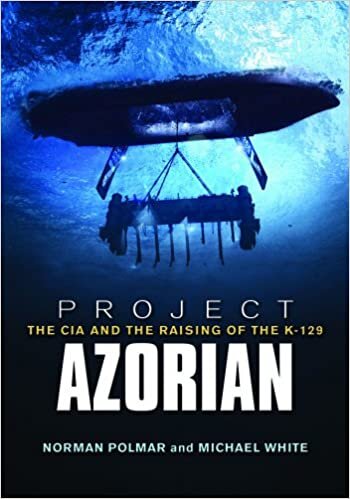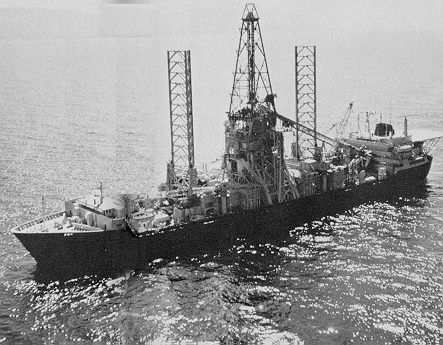Project Azorian Book Review

Project Azorian
By Norman Polmar and Michael White
$29.95; 276 pages

Hughes Glomar ExplorerI had heard of the Hughes Glomar Explorer before. The kind of science books I read as a kid often featured engineering feats such as the HGE, I can still remember the blurb about the ship being built for seafloor mining of manganese nodules. For reason or another it never worked out, but these books never said why.
It turns out it was all a lie. The Hughes Glomar Explorer was really one of the most ambitious gambits of the Cold War. The HGE was constructed for the singular purpose of clandestinely recovering a sunken Soviet submarine from the bottom of the Pacific.
The ballistic missle submarine K-129 sank on March 8, 1968 1,500 miles northwest of Hawaii. The American underwater sonophone network discovered that something had happened, and the position was triangulated. The USS Halibut was sent to locate the wreckage, and was able to accurately locate the wreck and take photographs.
Using this information, the CIA decided to try to recover the submarine, and the HGE was commissioned under the codename Project Azorian. The CIA contacted Howard Hughes and he was more than happy to provide a cover story for the mission and laundering of the money to disguise the true ownership of the ship. His many companies and eccentric reputation made both of these things possible. The cover story was so good that some universities began to offer programs in Ocean Engineering to prepare students for the seafloor mining boom.
The Soviets were fooled as well. They never discovered the true purpose of the ship until after it had already been used. The HGE was constructed in public, but the critical recovery vehicle codenamed Clementine was built inside a submersible barge to prevent anyone from realizing the ship was not actually equipped for mining.
This crazy idea almost worked. The submarine was successfully captured, but broke in half while being lifted to the surface. Only the bow was actually recovered. The Soviets actually watched this lift taking place, but did not know what had been done until the story was leaked in the American press in 1975. This leak scrapped plans to send the HGE back to recover the rest of the submarine, because the Soviets threatened war if an American ship returned to the site.
Project Azorian would ultimately cost $500 million, the same as a lunar mission in 1970. This project pushed the state of the art so far that the ship would not find another use for 40 years, when it was leased to Global Santa Fe for its stated purpose: seafloor mining. The American Society of Mechanical Engineering designated the ship an Historic Mechanical Engineering Landmark in 2006.
This is the second Historic Mechanical Engineering Landmark I have come across in a month. When I was touring the Johnson Space Center, my fellow associate asked me, "Why can't we make something like this?" We have vastly better technology as engineers. These guys worked on paper! However, I realize now that one of the things we are lacking is money. Project Azorian would cost $2.7 billion today. Not many people are willing to throw down that kind of money on something that will only be used once.
This book was a great read. I read the whole thing in two days while on vacation. The book is well-researched, with the explicit purpose of correcting the earlier mistakes of other books on the HGE and K-129. There are lots of fun asides about Cold War espionage and politics that situate the book in its historical context. Anyone interested in the Cold War, submarines, or just science and history should find this book engaging.

Comments ()